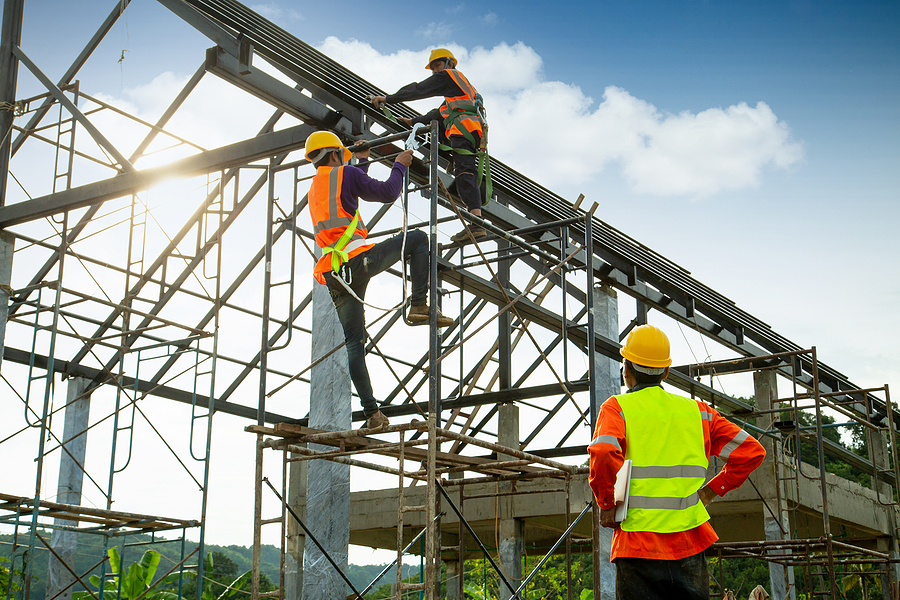The Importance of Fall Protection for New Mexico Residential Construction Site Safety

At New Mexico construction sites one of the most common causes of serious work-related injuries and deaths, falls remain at the top of the list, year after year. As a result of this harsh reality, employers must set up safety precautions to avoid endangering their employees.
Employers are responsible for the mitigation of the risk associated with falling and doing so is simple with proper training and consistent management.
How to Reduce Falls in the Workplace
The risk of falling is most prevalent in areas where an employee can be positioned to fall off elevated workstations or into holes that can be found in the floor or the walls.
The Occupational Safety and Health Administration (OSHA) recognizes this risk and has regulations in place to facilitate care surrounding these areas.
The agency requires that adequate fall protection is provided at elevations of four feet or higher within general workplaces. This limit is raised, however, in industries that find the restrictions are too stringent considering the daily activities of the workers involved.
In shipyards, for instance, fall protection need only be provided if the employer is placed at a height at or above five feet. In the construction industry, this minimum is raised again to six feet and in the industry of longshoring operation, the minimum height is eight feet.
Additionally, OSHA requires that fall protection be implemented when conditions below the working platform are considered hazardous; regardless of height. This refers to a situation in which an employee could reasonably fall onto or into dangerous machines or chemicals. Examples of this could vary wildly, from a simple conveyor belt to a deadly vat of acid.
This regulation dictates that employers must take extra precautions when employers are at risk of falling into something that could be potentially damaging.
These safeguards include: guarding every floor hole where a worker could potentially walk into with a hole cover or “toeboard,” and installing guard rails around every elevated open-sided floor, platform, or runway.
Some effective measures against fall protection include the implementation of safety harnesses, stair railings, safety nets, or handrails.
OSHA Requirements for Employers
- Employers must provide working conditions that are free of known hazards
- Floors must be kept clean, organized, and as dry as reasonably possible in all work areas
- Employers must provide adequate personal protective equipment at no cost to employees
- Workers must be trained and adequately informed on the job hazards
How to Protect Your Employees from Falls
There is a litany of techniques and procedures that can reduce the risk of falls in your workplace. The most crucial step in achieving this is by performing extensive research and making yourself, the employer, the expert.
The most conventional methods for ensuring worker safety include the implementation of safety net systems, proper installation of guardrails, and trusted personal fall protection systems.
While these systems are each excellent means of protecting your employees, it is incredibly important to also adopt safe work practices and facilitate extensive safety training.
